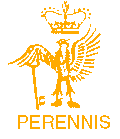Founded 1980
Chair:
Secretary:
Treasurer:
Graham Smith
Jan Thompson
Graham Mumby-Croft
Issue No. 81 Autumn 2019
COMPUTER CORNER
Are you baffled by the jargon of computers? If so here are a few explanations that you may, (or may not) find useful, or at least enlightening:
32bit/64bit This is a measure of how much data a computers processor unit can handle based on access to physical memory. Most older computers are 32bit and modern ones, less than 10-years old are 64bit.
This is a measure of how much data a computers processor unit can handle based on access to physical memory. Most older computers are 32bit and modern ones, less than 10-years old are 64bit.
The good news is that 32bit optimised software will run on a 64bit machine and 64bit software will run on a 32bit machine, albeit slightly slower.
USB 2.0/3.0/3.1 USB stands for Universal Series Bus and simply means a standardised system for computers to connect to peripheral items such as keyboards, mice and external drives like a CD. The standards for USB are controlled by an International body to ensure that USB is the same from any source, anywhere in the world. The main difference in the numbers relates to the speed at which they can transfer data. The original USB 1 has been superseded now, but transferred data at the rate of 12mb/sec. The latest USB 3.1 transfers data at the rate of 10gb/sec or almost 1000 times faster. You may not be aware but USB is colour coded inside the connection with USB 1 being white, USB 2 black and USB 3 blue. USB also delivers power as well as data.
USB stands for Universal Series Bus and simply means a standardised system for computers to connect to peripheral items such as keyboards, mice and external drives like a CD. The standards for USB are controlled by an International body to ensure that USB is the same from any source, anywhere in the world. The main difference in the numbers relates to the speed at which they can transfer data. The original USB 1 has been superseded now, but transferred data at the rate of 12mb/sec. The latest USB 3.1 transfers data at the rate of 10gb/sec or almost 1000 times faster. You may not be aware but USB is colour coded inside the connection with USB 1 being white, USB 2 black and USB 3 blue. USB also delivers power as well as data.
USB A/B/C This refers to the type of connection on the end of the lead. USB/A is the standard oblong connection at your computer. USB/B is the smaller square type of connection, usually used on printers and other peripherals, although this is now almost redundant. USB/C is the latest micro connection and connects to and charges items such as mobile phones and tablets. Many newer laptop computers come with at least 1 USB/C port.
This refers to the type of connection on the end of the lead. USB/A is the standard oblong connection at your computer. USB/B is the smaller square type of connection, usually used on printers and other peripherals, although this is now almost redundant. USB/C is the latest micro connection and connects to and charges items such as mobile phones and tablets. Many newer laptop computers come with at least 1 USB/C port.
Wi-Fi
 Contrary to popular belief Wi-Fi does not stand for Wireless Fidelity but is actually a trademark name for the Wi-Fi Alliance, which is the organisation that oversees the standardisation of the system and compliance with Institute of Electrical and Electronic Engineers (IEEE) regulations. The current IEEE standard is 802.11ac so if you are looking for any item of Wi-Fi equipment then this is the compliance standard to look for in order to achieve the best speeds and quality.
Contrary to popular belief Wi-Fi does not stand for Wireless Fidelity but is actually a trademark name for the Wi-Fi Alliance, which is the organisation that oversees the standardisation of the system and compliance with Institute of Electrical and Electronic Engineers (IEEE) regulations. The current IEEE standard is 802.11ac so if you are looking for any item of Wi-Fi equipment then this is the compliance standard to look for in order to achieve the best speeds and quality.
SD Cards Secure Digital cards are Memory Cards that fit into portable items such as cameras, phones and Tablets to provide memory storage function. They come in a range of sizes of Standard, Mini and Micro, and a range of capacities and data transfer rates. They also come as SDHC/SDXC/SDUC depending on their capacity.
Secure Digital cards are Memory Cards that fit into portable items such as cameras, phones and Tablets to provide memory storage function. They come in a range of sizes of Standard, Mini and Micro, and a range of capacities and data transfer rates. They also come as SDHC/SDXC/SDUC depending on their capacity.
CPU Central Processor Unit. This is the computer chip at the heart of any computer that does the actual work of carrying out the calculations that make a computer work.
Central Processor Unit. This is the computer chip at the heart of any computer that does the actual work of carrying out the calculations that make a computer work.
Codec Stands for Compressor/Decompressor and is a piece of computer code that tells the computer how to record and play different types of media (usually music or video).
Stands for Compressor/Decompressor and is a piece of computer code that tells the computer how to record and play different types of media (usually music or video).
Graham Mumby-Croft
Graham Mumby-Croft


